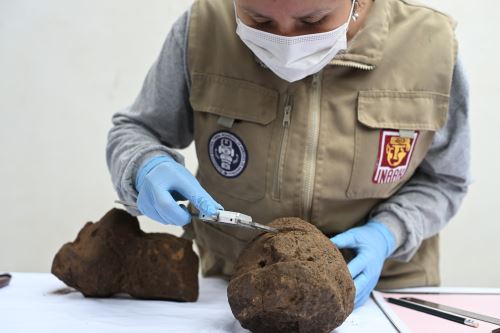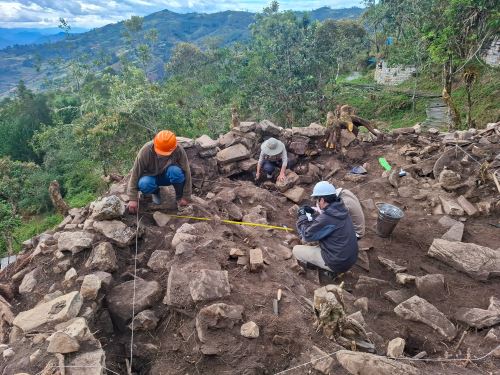10:00 | Chachapoyas (Amazonas region), Aug. 13.
The remarkable discovery of two carved heads and around 200 circular structures belonging to the Chachapoya culture at the Ollape Archaeological Site, located in Amazonas region, has astonished the archaeological community and the entire country. The significance of this find is only beginning to be revealed.
Solis led the team that made this important discovery.
He specified that the two carved heads found were made of sandstone, which is abundant in the area where the archaeological site is located.

"The two carved heads were found associated with an outer wall of a circular structure at the archaeological site (located in La Jalca Grande district, Chachapoyas province). Their location suggests they were part of the decoration," he stated.
The director noted that, although there is other evidence of carved head findings linked to the Chachapoya culture, "this discovery is particularly significant because it is the first time they have been found in their original context."
Solis said that the valuable discovery was made during a research project aimed at identifying the types of activities carried out at the settlement.
In addition to the carved heads, he reported that the researchers managed to identify about 200 structures, most of them circular enclosures.
Solis explained that LiDAR technology was used for this discovery, a modern remote sensing tool that allows topographic surveys of areas covered by dense vegetation.
Subsequently, the team corroborated the finding directly in the field.
Some of these structures feature geometric friezes characteristic of the Chachapoya culture, with rhombus- and zigzag-shaped designs similar to those found at sites such as the Kuelap Archaeological Monument. However, unlike the latter, the Ollape settlement does not have a large perimeter wall.
Pablo Solis stated that the Ollape archaeological site is part of the Chachapoya culture and dates from a period between AD 900 and 1470.
The researcher revealed that the excavation work has also uncovered other remains, such as pottery fragments, stone tools like grinding stones, and animal bones.
Remains of an Andean bear
A particularly remarkable find was the remains of an Andean bear, discovered in an organic context; however, its association with any ritual or specific activity is still under analysis.
"We want to identify what activities were being carried out and what the hierarchy in these settlements was like," said Solis, who highlighted the team's interest in gaining a better understanding of the way of life of Ollape's inhabitants.
The research project also includes a conservation component, aimed at preserving the structures so they can be visited in the future.
This work is being carried out in collaboration with the community and the Municipality of La Jalca Grande, with financial support from Spanish Cooperation (AECID).
The information gathered will contribute to the museographic script of the local community museum, thereby enriching the region's cultural heritage.

(END) MAO/MVB
Published: 8/13/2025